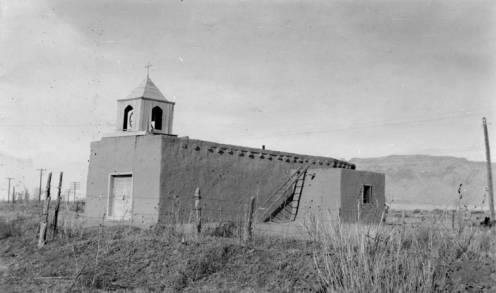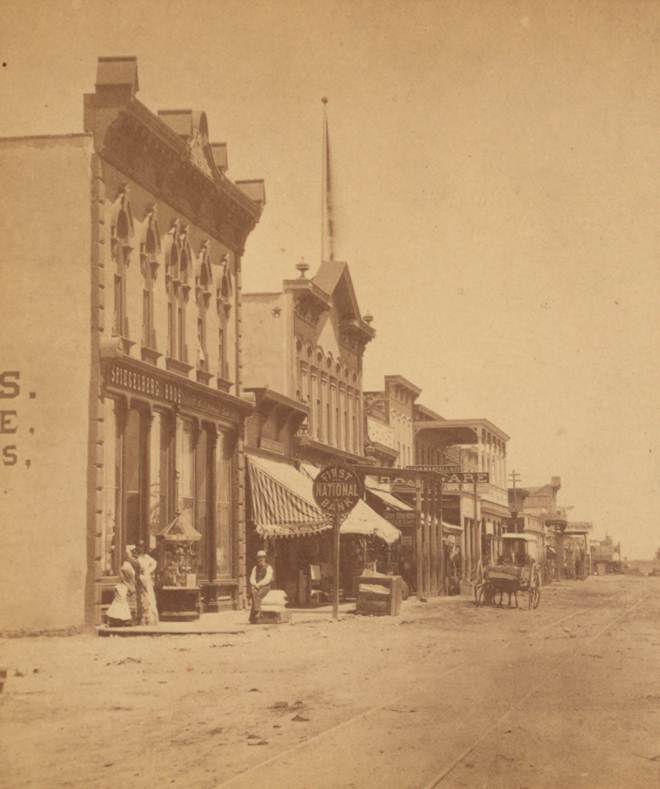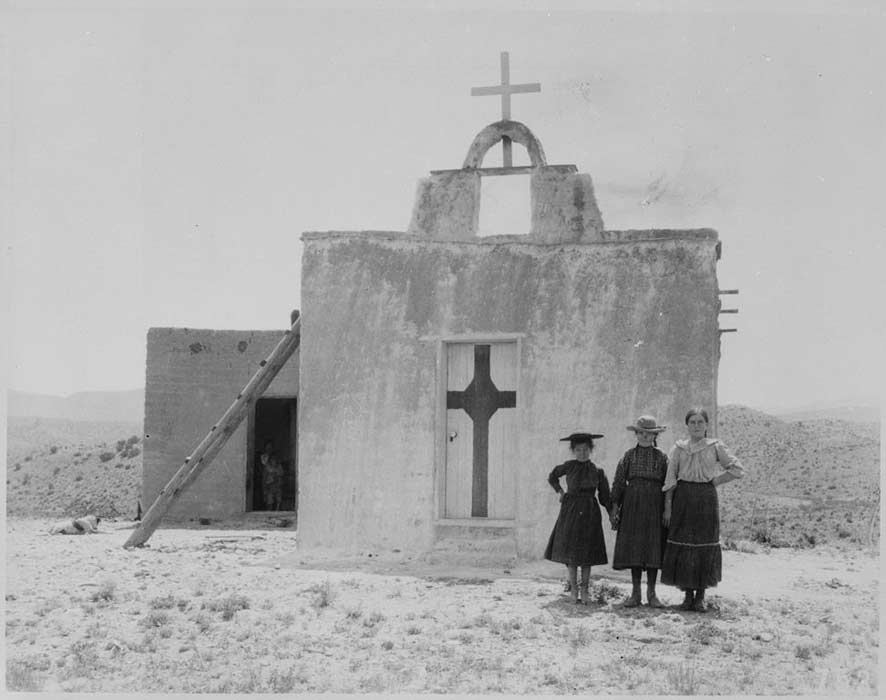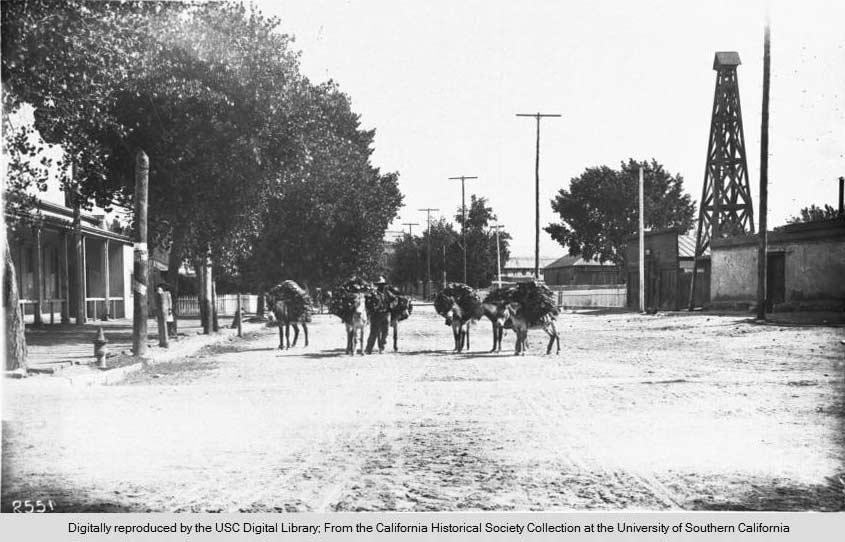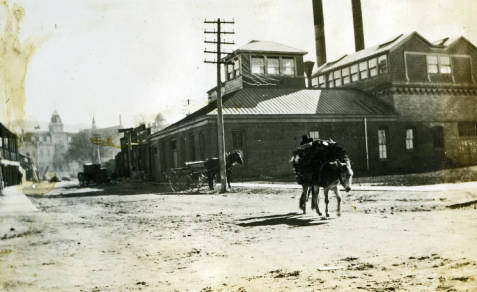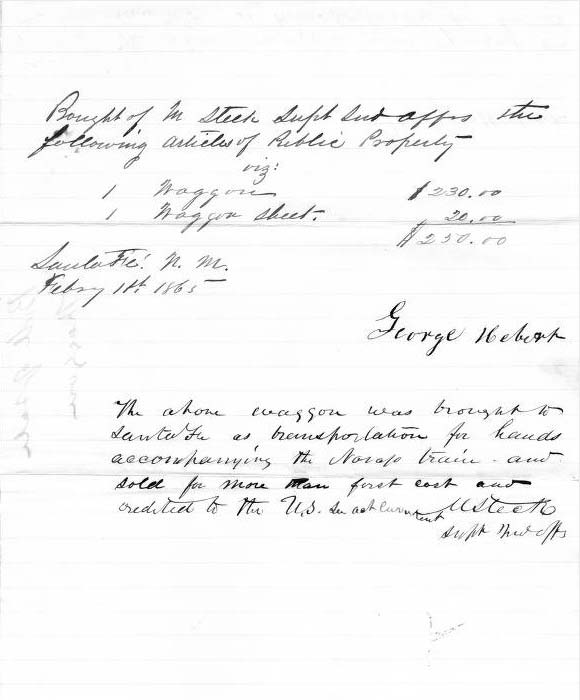Ben Wittick took this photograph of a commerical street in Albuquerque, New Mexico, in 1880. It was produced as a stereograph card, a double image that people could look at through a viewer. Businesses line the wide dirt street, which has street car rails running down the center. A man can be seen sitting on a stack of (probable) grain sacks near a sign for the First National Bank, while nearby a woman and child look in the windows of a store. They appear to be wearing rather fancy clothing. Further down the street, a horse and buggy pass in front of a hardware store. It’s a placid image of daily life in Albuquerque, taken by the man who produced one of the most famous portraits in New Mexico history: Geronimo, leader of the Chiricahua Apache.
Read more...Three girls in Sunday clothes pose in front of an adobe church in 1908 in the Alamo National Forest. The church has an interesting door, with a cross that is either painted or made of wood as part of the door. Two more children can be seen in the open doorway in the background. The photo was taken by Arthur M. Neal, the Forest Service Acting Supervisor in charge of the Alamo National Forest in New Mexico Territory (now the Lincoln National Forest).
Read more...If one burro carrying firewood wasn't enough for you, how about six? In this photo taken around 1895-1900, a burro train is making its way down a dirt street in the neighborhood of old Fort Marcy in Santa Fe. The wooden tower to the right houses an alarm bell for the fire department just below it. Commercial buildings and trees line the other side of the road.
Read more...In this scene of daily life in 1890, a burro trudges down a dirt street in a New Mexico town carrying a load of firewood. It is followed by a man in a hat. Behind them a horse and cart wait by a telephone pole, in front of a large brick building.
Read more...This handwritten note, described only as a "receipt for a wagon," first caught my attention as an interesting tidbit of daily life in the 1860s. But as I investigated I discovered the seemingly innocuous receipt was a relic of a tragic episode in Navajo and U.S. history. The “waggon” in question was sold to George Herbert by Michael Steck, Superintendent of the New Mexico Bureau of Indian Affairs, for $230 (along with a “waggon sheet” for $20) on Feburary 1st, 1865. The note at the bottom states:
The above waggon was brought to Santa Fe as transportation for hands accompanying the Navajo train and sold for more than first cost and credited to the U.S. Su a?t?uvurent
I can’t quite make out that last bit about where the profit was credited to, but there was profit indeed on this second-hand wagon. It’s the description of the wagon’s prior use that connects this piece of paper to a bigger part of history—the euphamistically titled “Navajo train,” better known as The Long Walk.
Read more...
